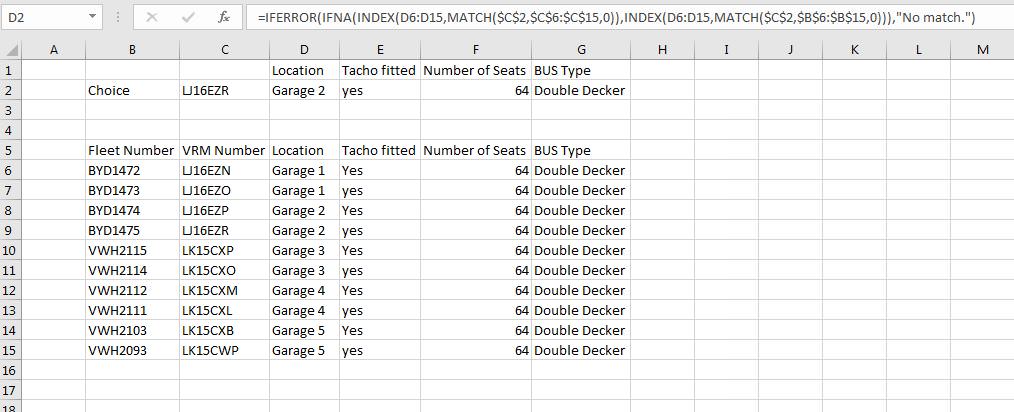Its_All_Dinx
New Member
- Joined
- Apr 24, 2018
- Messages
- 3
Hello All
I normal only search the forum for help but no one seems to have answered my burning question.
I would like a Formula but just cannot work out how to do this.
(Small Story) - I have a spread sheet/ data base and I am trying to work out if I put in the fleet number it will tell me some info about the coach, but if the fleet number is blank and I put in the number plate of the coach I want it to return info about the coach
so I need a formula that will look at the first cell for data but if the first cell is blank it will look at the 2nd cell and which ever one has data it will then run the vlookup
If needed I can attached the spread sheet.(not sure how to do this)
This is my currently Formula but it only reads from one cell
=IFERROR(VLOOKUP(B5,'FULL Fleet List'!$A$2:$E$2295,1,FALSE),"No Match Found")
I normal only search the forum for help but no one seems to have answered my burning question.
I would like a Formula but just cannot work out how to do this.
(Small Story) - I have a spread sheet/ data base and I am trying to work out if I put in the fleet number it will tell me some info about the coach, but if the fleet number is blank and I put in the number plate of the coach I want it to return info about the coach
so I need a formula that will look at the first cell for data but if the first cell is blank it will look at the 2nd cell and which ever one has data it will then run the vlookup
If needed I can attached the spread sheet.(not sure how to do this)
This is my currently Formula but it only reads from one cell
=IFERROR(VLOOKUP(B5,'FULL Fleet List'!$A$2:$E$2295,1,FALSE),"No Match Found")








